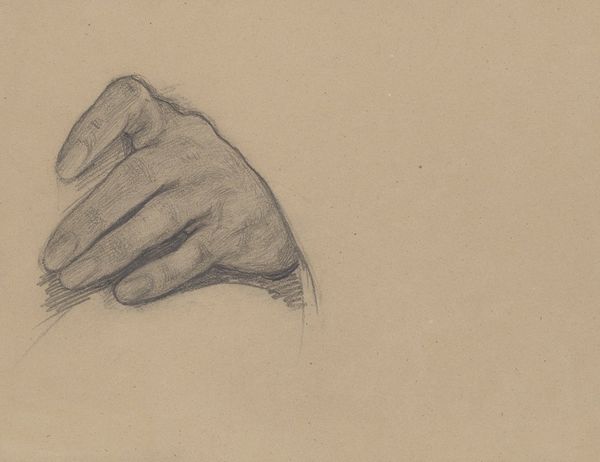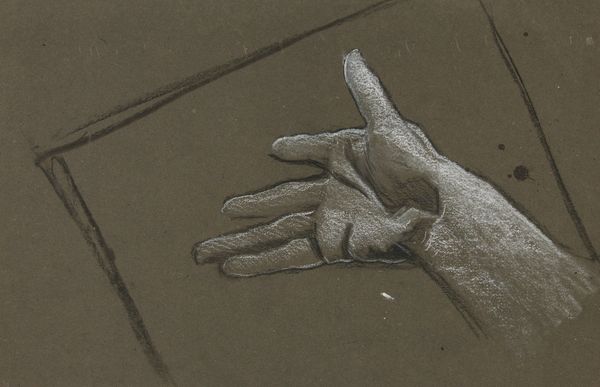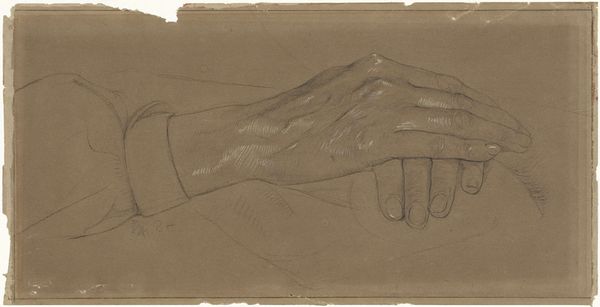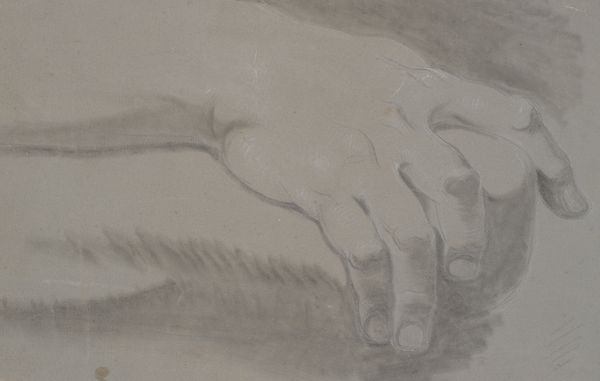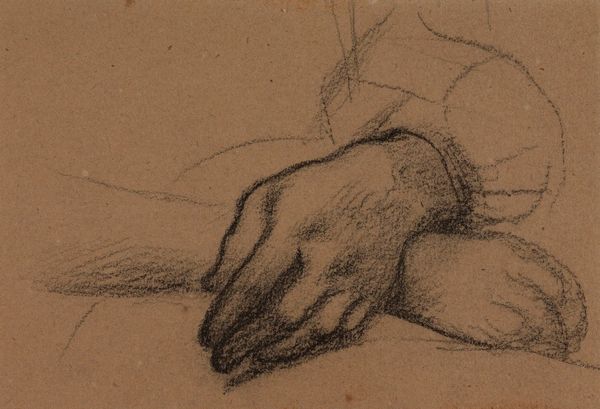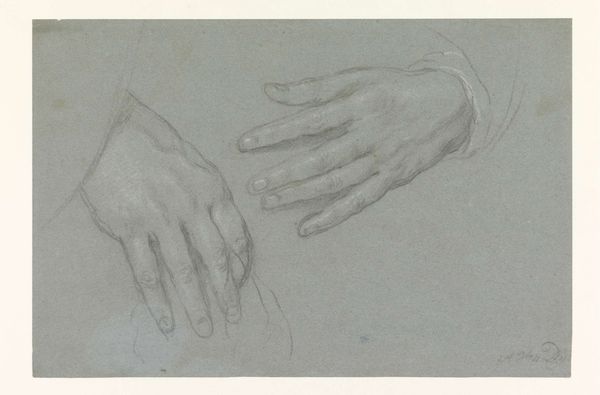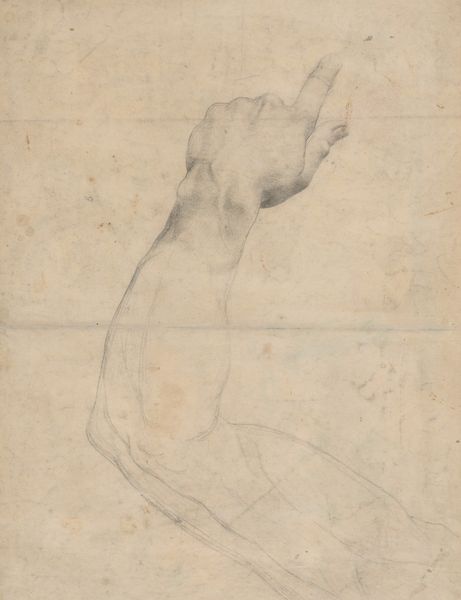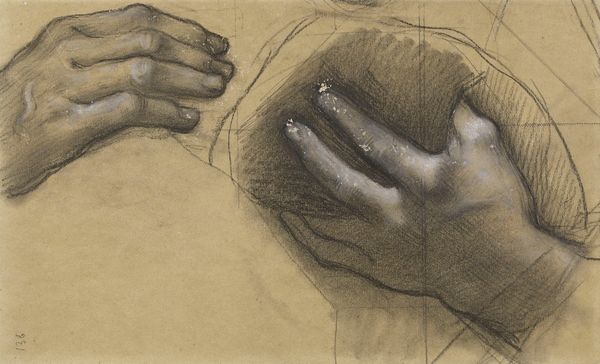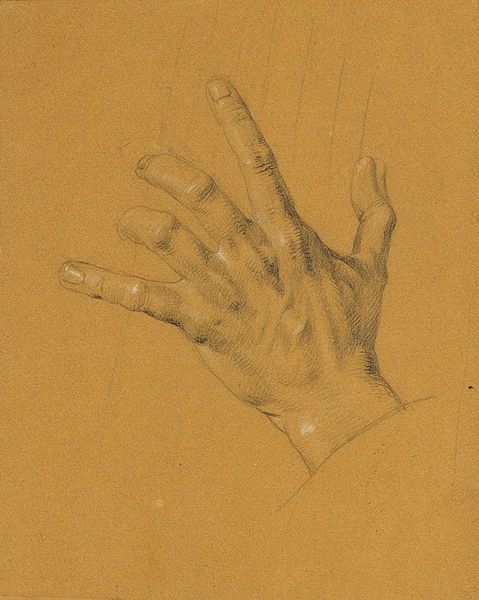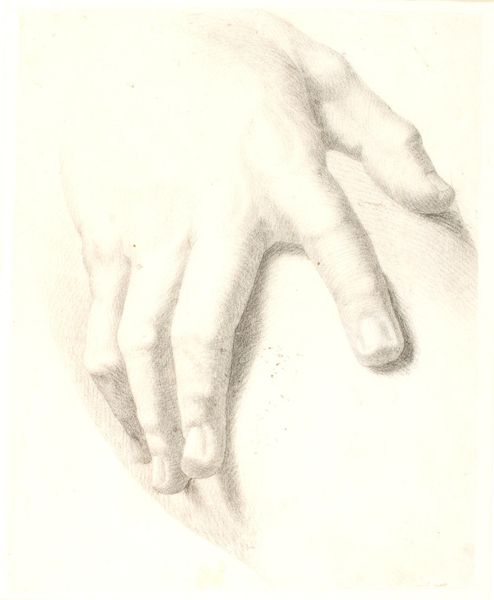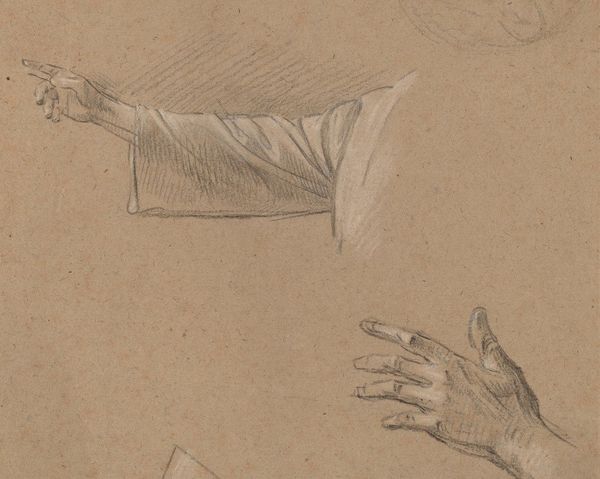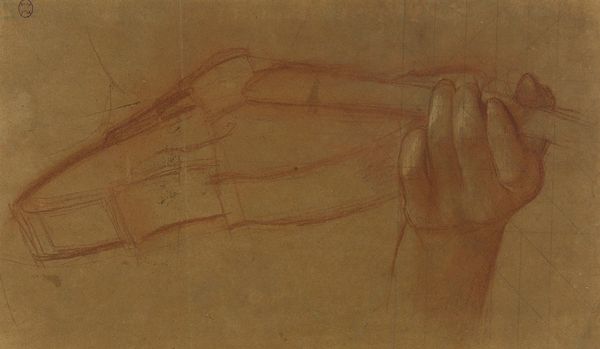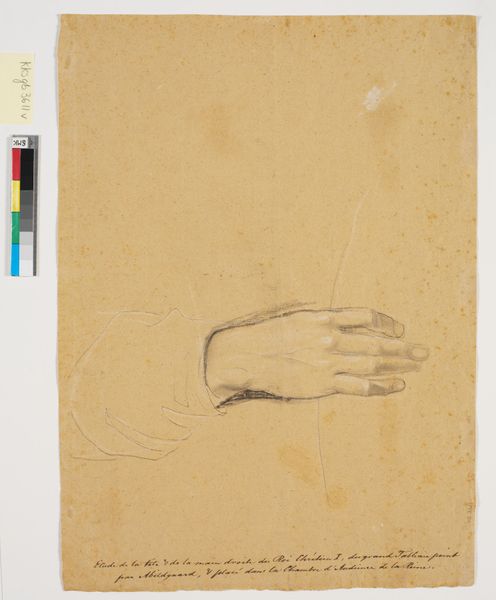
drawing, paper, pencil
#
portrait
#
pencil drawn
#
drawing
#
amateur sketch
#
toned paper
#
light pencil work
#
pencil sketch
#
incomplete sketchy
#
figuration
#
paper
#
form
#
personal sketchbook
#
detailed observational sketch
#
pencil
#
line
#
sketchbook drawing
#
pencil work
#
academic-art
#
realism
Dimensions: 167 mm (height) x 227 mm (width) (bladmaal)
Editor: Here we have "Study of a Hand," a pencil drawing from around 1778-1809, currently held at the SMK in Copenhagen. It strikes me as quite academic, almost like a preparatory sketch. What can you tell me about the historical context of studies like this? Curator: It’s intriguing to see a drawing like this because it really opens a window onto the artistic training of the period. Consider the power structures in art academies at that time. Why meticulously render a hand? Editor: Well, wouldn't artists use drawings to master anatomy and form before tackling larger compositions? It seems so… focused and technical. Curator: Exactly. Art academies promoted a hierarchy of genres, with history painting at the top. These studies were building blocks. But think about who had access to these institutions. For instance, what opportunities were available to women artists? Or artists from different socio-economic backgrounds? Editor: Right, the Royal Academy wasn’t exactly a diverse space. So, these "neutral" studies were actually part of a very specific system of artistic production and social control? Curator: Precisely. And the display of such drawings, even today, reflects institutional values. Are we celebrating individual talent or a specific mode of artmaking sanctioned by the establishment? Consider the power dynamic embedded in this seemingly simple sketch. Editor: That shifts my perspective entirely! I was initially thinking about skill and technique, but now I see it’s connected to a broader system of art education and societal structures. Curator: Indeed. By looking beyond the surface, we start to understand how art reflects and reinforces particular ideologies. It's not just about a hand; it's about the hand that makes art, and the society that shapes that hand. Editor: Thanks, it’s fascinating to consider art in light of social dynamics, which makes you wonder, what other layers we can discover when we engage with art from such different points of view. Curator: Absolutely, every artwork is in dialogue with the history that shaped it.
Comments
No comments
Be the first to comment and join the conversation on the ultimate creative platform.
